- My Account:
- Sign In
- Register
- Make Payment

Home air conditioning system options: A side-by-side comparison.
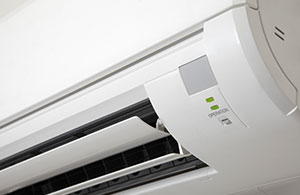 With summer
approaching and humidity levels climbing, it’s easy to see why air conditioning is a home comfort necessity. There are four main types of home air conditioning units and systems that function on the principle of removing heat. Results can vary
between systems and units when it comes to efficiency levels, aesthetics and the ability to provide comfort. In this article, we walk you through the pros and cons of each of the units and systems to help you decide on the best option for your home.
With summer
approaching and humidity levels climbing, it’s easy to see why air conditioning is a home comfort necessity. There are four main types of home air conditioning units and systems that function on the principle of removing heat. Results can vary
between systems and units when it comes to efficiency levels, aesthetics and the ability to provide comfort. In this article, we walk you through the pros and cons of each of the units and systems to help you decide on the best option for your home.
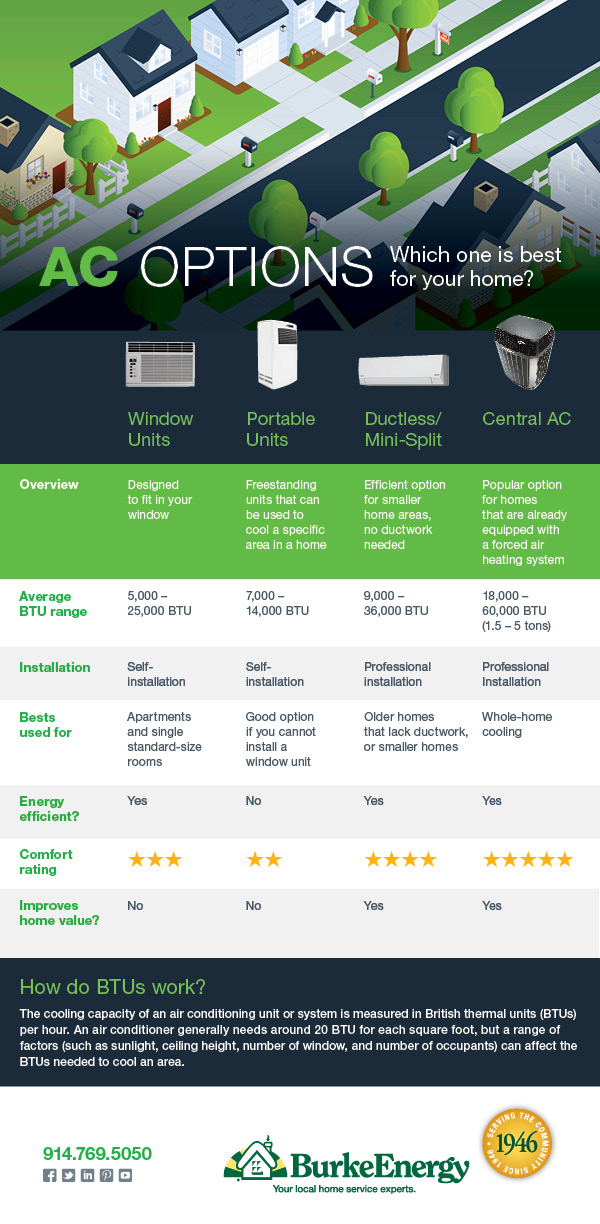
Window AC units.
A popular type of cooling equipment is window units, which are designed to fit in double- and single-hung windows. They’re commonly found in apartments that lack central air conditioning or providing a cooling boost to single rooms in larger homes.
Window AC pros.
Window air conditioning units are smaller, more portable, and easier to install than most other types of units. They are also the cheapest option for adding air conditioning to your home, especially if you’re working with a tight budget. Models manufactured today are up to 30 percent more efficient than those manufactured only a decade ago. And many come with warranties as long as five years, so you will have peace of mind when you make your purchase.
Window AC cons.
Always remember, window air conditioners aren’t meant to cool your entire home. Even if you live in an apartment, you’ll need multiple units to keep the entire apartment comfortable. Each unit you install takes up a window for the entire summer. You will also have to deal with loud compressors running in each room. If you decide to go with a larger unit, it may be awkward to install and remove. Factors may limit the efficiency of your window air conditioner, including high ceilings, numerous windows and doors, high sun exposure, or cooling a room on the top floor.
Portable air conditioners.
These units are similar to window air conditioners, but the unit sits on the floor instead of sitting in the window. Portable air conditioners draw in air, remove heat and moisture, and vents cool dry air into your home. The hot and humid air is vented out of your home through an exhaust host going out the window. This is only a superior option to window units if you have the wrong kind of windows or are worried about installing a window unit.
Portable air conditioner pros.
Portable units are even easier to install than window units. The floor unit rolls around on casters so you can quickly position or move it, and the hose leading out the window does not obstruct your view. Plus, the hose is easy to take out of the window temporarily when the weather is nice.
Portable air conditioner cons.
According to Consumer Reports, portable air conditioners usually only deliver half the cooling capacity they claim, leaving you feeling hot and sweaty even if the unit is running full bore. They’re also typically more expensive and less efficient than similarly sized window units, which drives up purchasing and operating costs. Noise can be another factor, and most portable air conditioners have reservoirs that need to be manually drained as the unit removes humidity from the air.
Ductless mini-split air conditioning systems.
A ductless mini-split is essentially a heat pump minus the ductwork. It has two main components. One is an outdoor compressor, similar to one you would find in a central AC unit. The second is an indoor evaporator coil and air handling unit placed on a wall or the ceiling. A conduit links the two units together through a tiny hole in the wall. Ductless mini-split air conditioners are built to cool older homes without ductwork, or smaller homes and add-ons where ductwork isn’t practical. Some Ductless AC models have higher efficiency ratings that any other type of air conditioner.
Ductless mini-split air conditioning pros.
The greatest advantage to a mini-split system is their ability to provide flexible cooling to each individual part of your home through a smaller, more energy efficient operation. It’s as close as you can get to central air without having to tear up your ceiling and walls for ductwork. Also, since mini-splits are a type of heat pump, they can provide heating for your home in the winter. An added bonus to a ductless system is that they are as quiet as an ordinary fan. With a compressor located outside, the unit is much quieter than a window or portable air conditioner. Plus, there is no need to obstruct the window with a unit or exhaust, so you have an unobstructed view outside, the ability to operate the window as you wish, and better home security.
Ductless mini-split air conditioning cons.
Ductless mini-splits are more expensive than window or portable units. You will need to hire a professional to perform the installation, which includes linking the indoor and outdoor components by drilling a three-inch hole in the wall. And you need to take interior design considerations into account, because the unit needs to mount to the wall or ceiling of the room.
Central air conditioning system.
This system is the best way to cool your entire home. Central Air distributes cooled air throughout ductwork with return and supply registers in each room. The air conditioning components are located outside, except for the air handler, which is typically shared with the furnace. If you have ductwork in place and are looking for whole-house cooling, this is the most popular system.
Central air conditioning pros.
A central AC system is the most efficient way to keep your entire home cool. This system ensures that you lower energy bills and maintain indoor comfort with cooler temperatures and lower humidity. And with components located outside, you can keep cool with a nearly invisible, silent system.
Installation is fairly straightforward for our trained professionals, especially in homes with ductwork. Central AC systems are also a valuable investment as a permanent fixture to your home.
Central air conditioning cons.
Central air conditioning systems require annual maintenance to stay in top working condition for years to come. You should prepare for higher upfront costs, especially if you also need to install ductwork. However, replacing an existing central air unit is cheaper than installing a new ductless mini-split.
The final question is what size air conditioning system you need. If you choose a unit that is undersized, it won’t keep up on the hottest days. An oversized unit will short cycle, wearing out the parts faster even though the system can’t dehumidify your home.
No matter if you choose a central home air conditioner or ductless mini-split system, a licensed professional contractor sizes the unit for you so it perfectly meets your home’s needs. It’s just another reason to opt for a professionally installed home air conditioner.
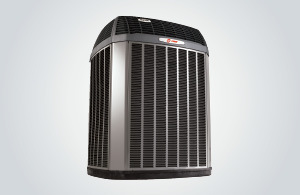 | Click here to view the latest offers on central air conditioning equipment |


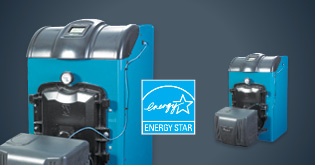
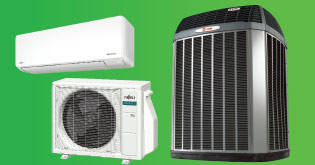
.jpg?sfvrsn=8bd8912d_3)